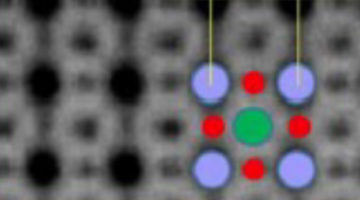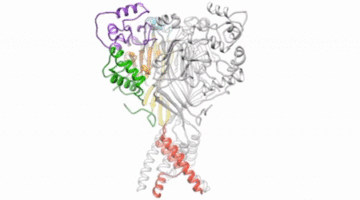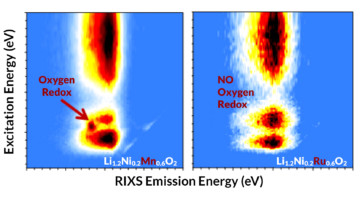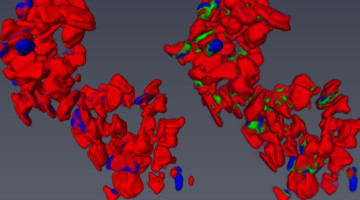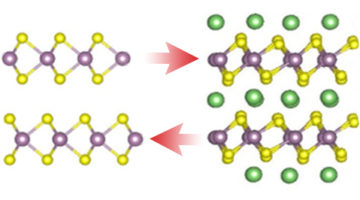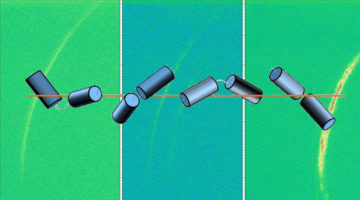The most expensive component of a battery, the cathode, requires rare transition metals like cobalt. Previous attempts to replace cobalt with inexpensive and non-toxic manganese delivered insufficient performance. Now, researchers have optimized the composition of high-energy-density, high-capacity manganese-based cathodes. Read more »
Science Briefs
Oxygen Vacancies Matter in the LaNiO3 Metal–Insulator Transition
Electronic structure measurements using x-ray absorption spectroscopy suggest that oxygen vacancies contribute to the metal–insulator transition in ultrathin films of LaNiO3. The results give scientists another “knob” to turn to tune this important transition, which could be useful for making advanced electronic devices. Read more »
Open and Shut: Pain Signals in Nerve Cells
Researchers used x-ray data to define the structure of a closed protein gate important for neuronal signaling. Comparing the closed gate with previously known structures of the same gate when open, researchers now have a comprehensive picture of proton-dependent channels in neurons. Read more »
New Clues to Oxygen’s Role in Higher-Capacity Batteries
As battery electrodes, layered transition-metal (TM) oxides demonstrate storage capacities far beyond what’s explained solely by TM redox activity. In this work, measurements of the lattice oxygen redox activity in two lithium-rich layered oxides showed strong oxygen redox when manganese was the TM, but not with ruthenium. Read more »
3D Localization of Nanoscale Battery Reactions
A new tool lets researchers pinpoint the locations of chemical reactions happening inside batteries in three dimensions at the nanoscale level. Combining ptychography, tomography, and spectroscopy, Nanosurveyor 1 is a multidimensional tool providing novel insight into the design of next-generation batteries and devices. Read more »
Scientists Use Machine Learning to Span Scales in Shale
Machine-learning techniques have been used to integrate fine- and large-scale infrared characterizations of shale—sedimentary rocks composed of minerals and organic matter. Understanding shale chemistry at both the nano and mesoscale is relevant to energy production, climate-change mitigation, and sustainable water and land use. Read more »
Clarifying the Working Principle of a High-Capacity Battery Electrode
Operando x-ray absorption spectroscopy experiments revealed the electrochemical reaction mechanism of molybdenum disulfide (MoS2) electrodes in lithium-ion battery cells. The work unambiguously clarifies that the MoS2 conversion reaction is not reversible and that the Li2S formed is converted to sulfur in the first charge process. Read more »
Imaging Magnetic Microstructure Response to Substrate Strain
A ferromagnetic thin film on a piezoelectric substrate offers a way to control magnetization in ultralow-power devices by relying on coupling between the piezoelectric and ferromagnetic components. At the ALS, researchers were able to image the electrically induced magnetic behavior and correlate it with the piezo-strain driving it. Read more »
Twisted Structures Emerge from Achiral Molecules
The spontaneous formation of chiral structures from achiral molecules could shed light on the origin of biological homochirality—how one type of chirality dominated the other in certain biological molecules. Here, resonant soft x-ray scattering (RSoXS) has been used to explore helical phases that emerge from achiral asymmetric dimers. Read more »
X-Ray Handedness Reveals Handedness of Electronic Vortices
Electronic vortex structures have been found to emerge from engineered samples of alternating complex-oxide layers. Resonant soft x-ray diffraction (RSXD) studies using circularly polarized x-rays revealed the vortices’ left- and right-handedness. The intriguing results open the door to electrically controllable chiral devices. Read more »
- « Previous Page
- 1
- …
- 13
- 14
- 15
- 16
- 17
- …
- 23
- Next Page »

